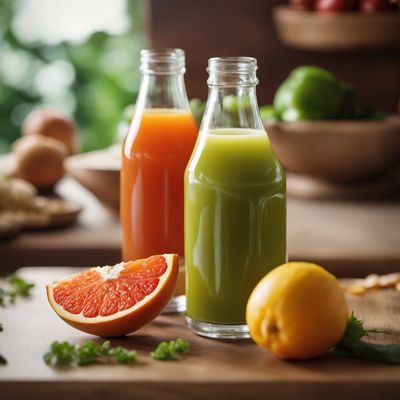
Ingredient
Other food for infants and children
Nourishing Delights for Little Ones: Exploring the World of Infant and Child Nutrition
Other food for infants and children refers to a wide array of specially formulated products that cater to the unique nutritional requirements of young ones. These foods are carefully crafted to provide essential nutrients, vitamins, and minerals necessary for their growth and development. From purees and cereals to snacks and beverages, these offerings come in various textures, flavors, and consistencies, ensuring a delightful and nourishing experience for little palates. With a focus on quality and safety, these foods are created to meet the specific needs of infants and children, promoting their overall health and well-being.
Origins and history
The development of other food for infants and children can be traced back to the early 20th century when advancements in nutrition science and a growing understanding of child development led to the creation of specialized food products. The introduction of infant formulas and baby cereals marked a significant milestone in providing alternative options for feeding infants who were unable to breastfeed. Over the years, extensive research and advancements in food technology have further expanded the range of other food options available, ensuring that infants and children receive optimal nutrition during their crucial growth stages.
Nutritional information
Packed with essential nutrients such as proteins, carbohydrates, healthy fats, vitamins, and minerals, other food for infants and children provides a balanced and age-appropriate nutritional profile, supporting their growth and development.
Allergens
It is important to carefully read the labels of other food products for infants and children, as some may contain common allergens such as milk, soy, wheat, eggs, or nuts.
How to select
When selecting other food for infants and children, look for products that are specifically labeled for their age group. Check for certifications and quality seals to ensure the product meets safety standards. Additionally, consider the ingredient list and opt for options with minimal additives or preservatives.
Storage recommendations
To maintain the freshness and quality of other food for infants and children, store them in a cool, dry place away from direct sunlight. Follow the instructions on the packaging for any specific storage requirements, such as refrigeration after opening.
How to produce
Other food for infants and children is typically produced by specialized manufacturers who adhere to strict quality control measures and follow regulatory guidelines to ensure the safety and nutritional adequacy of their products. It is not recommended for amateurs to produce these foods at home due to the complexity of formulating balanced and safe recipes.
Preparation tips
Other food for infants and children is usually ready-to-eat or requires minimal preparation. Follow the instructions provided on the packaging for serving suggestions and portion sizes. When introducing new foods, it is advisable to start with small quantities and observe any potential allergic reactions or digestive issues.
Substitutions
N/A (As other food for infants and children is specifically formulated to meet their unique nutritional needs, it is not recommended to substitute them with other ingredients.)
Culinary uses
Other food for infants and children is primarily used as a complete or supplementary source of nutrition for infants and children who are transitioning to solid foods. They can be incorporated into various recipes, such as mixing purees with cereals or using them as ingredients in homemade baby food recipes.
Availability
Other food for infants and children is commonly available in grocery stores, supermarkets, and online retailers worldwide.
More ingredients from this category

Herbal infusions (beverages) specific for infants and young children, liquid
Nurturing Little Ones: Exploring Herbal Infusions for Infants and Young Children

Herbal infusions specific for infants and young children, dry
Gentle Nourishment for Little Ones

Special food for children's growth
Nourishing Delights for Little Ones

Fruit and vegetable juices and nectars specific for infants and young children
Nourishing Beverages for Little Ones